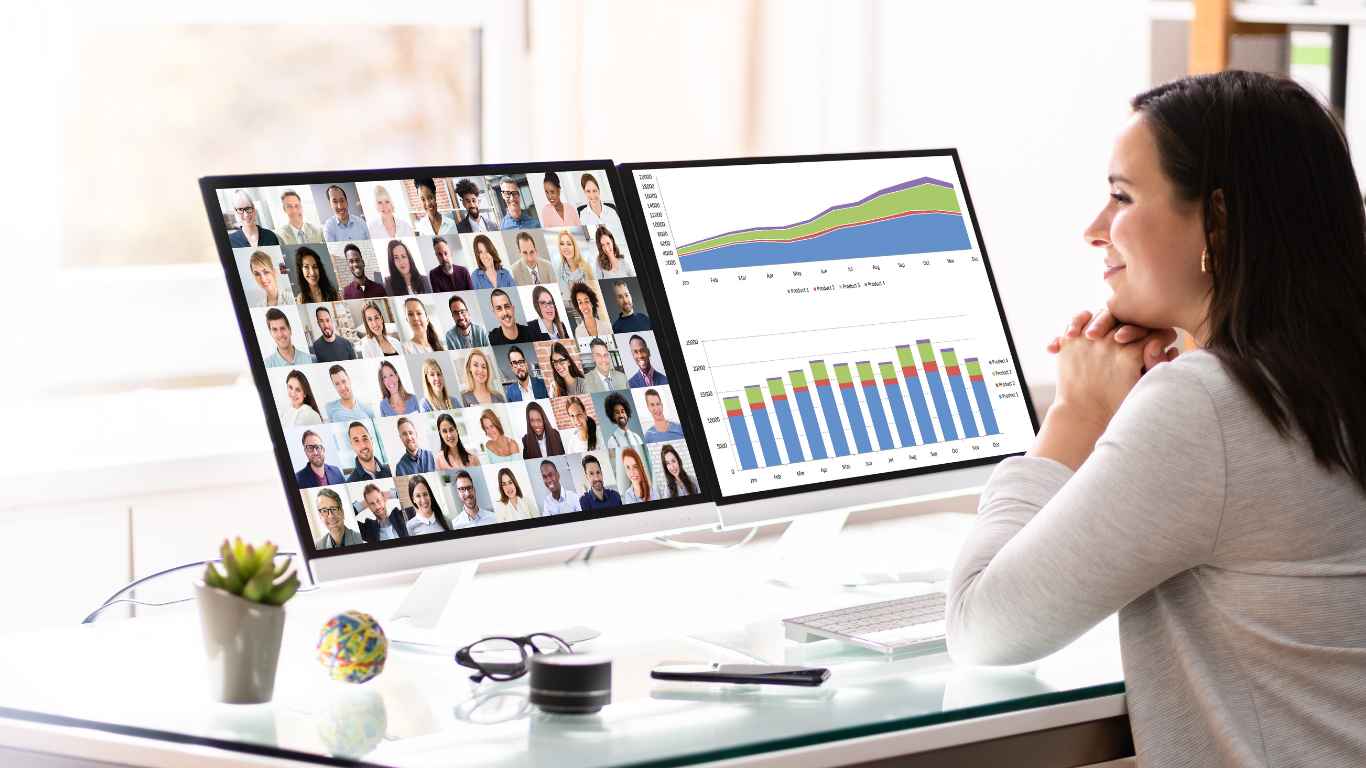
In the past few months, retailers have gone through furious, and exceptionally fast, transformation. We have seen well established names in the industry crumble and fall, while more agile players moved swiftly into their space. We have seen rapid change in consumer behaviour, and in the way businesses present, sell and deliver products.
Here are five emerging trends and technologies that we expect will offer new challenges and opportunities in the months and years ahead.
1. Online, digital, home-delivered and click-and-collect products
Social distancing, working from home and home-schooling have had an impact on what people buy, how they browse and shop for items, and the way they want to get products, information and experiences. Retailers’ digital transformation will continue to accelerate to keep up with lifestyles that have changed for good.
A functional eCommerce platform is now a necessity. According to Census statistics, during the pandemic sales on eCommerce grew almost 45% over the previous year – at the same time, overall retail sales decreased. Although eCommerce had been slowly gaining ground for years, the sudden surge in demand caught many retailers unprepared. The most common challenges include:
- Lack of a functional e-commerce – As the pandemic hit, latecomers had to build an eCommerce platform overnight (with mixed results) or use third party marketplaces like Amazon and eBay to stay top of mind with consumers and manage to sell at least some products.
- Online/offline disconnect – Many retailers lack a unified commerce approach, managing instead their eCommerce and stores with separate, poorly connected software solutions. This often results in lack of clarity: they can’t see inventory in real time (and move products to where they need to be), they can’t prevent the risk of overstock and out-of-stocks, and they can’t keep track of the customer journey and preferences across channels. Or facilitate click-and-collect.
- Delivery issues – Broken transportation networks, overwhelmed shipping services and difficulties in offering contactless deliveries are just some of the hurdles that retailers need to overcome.
- Scaling challenges – As demand grows and dwindles in seemingly unpredictable ways, retailers need to be able to scale their eCommerce systems, supply chain and store operations so they can handle sudden increases in traffic. At the same time, they also need to attract enough business to keep sales going during slow times.
2. Safe and contactless
Pre-COVID, consumers longed for engaging, all-encompassing, made-just-for me retail experiences. Today, the best in-store experience is still personalised and engaging – but happens at a safe distance.
Long queues at the checkout have gone from being a nuisance to a potential health hazard. Traditional checkouts where people have to queue to pay may become less common, to be replaced by:
- Mobile EPOS – By running the Point of Sale on mobile devices like tablet computers or smartphones, retailers can reduce needless crowding around the checkout. Employees can use the mobile POS to look up information, scan items, close transactions, accept payments and print receipts anywhere the customers are. This technology is also ideal for stores with large premises, or for retailers moving their business outdoors. Another advantage of mobile POS is that more devices can be added as needed at limited cost.
- Self-checkouts – Self-checkout machines help limit contact between customers and employees. These registers also require less space than traditional manned checkouts, enabling retailers to multiply their checkout points without wasting real estate.
- Scan-and-go technologies – The latest advances in Point of Sale technology see the POS move into the consumers’ hands. Shoppers can download a “scan and go” app on their phone and then self-serve in the shop, using their personal device (or a specific handset provided by the retailer) to scan the items as they are added to the cart. Scan and Go technology has become quite popular in grocery stores; we expect to see more of it in other retail sectors.
- Cashierless stores – The Amazon Go model, with no tills or cashiers, appeared extreme when it was launched. Today, more retailers are using technology (the most common is a mix of ceiling-mounted cameras, RFID tags and shelf sensors) that allows customers to shop and leave without needing to waste time to scan and pay items. We’ll certainly see more variations of this concept in the years to come.
3. Physical retail finds new footing
Although eCommerce can’t (yet) replace real-life shopping, the equilibrium has changed. While visiting a store used to be a form of leisure, fear of contagion has tipped the scale towards less frequent, shorter, more intentional shopping trips. Stores have transformed to respond to the new demands.
- Design that ensures distancing – The narrow store with winding aisles packed with products has quickly gone from looking quirky to a health hazard. In the upcoming months we expect stores to change their interiors with a focus on cleanliness, openness and empty space, with a focus on:
- Area dividers.
- Fewer shelves and items.
- QR codes.
- Item pick-up stations
- Digital customer tally counters.
- Outdoors stores.
- Fewer products – Online, endless aisles of products mean “you can find any product you need”. But a small, curated selection is the secret behind the success of retailers like Aldi and Lidl, and now others are following suit reducing the number of SKUs.
- Fulfilling products, not experiences – With in-store and curbside order pickups booming worldwide, many retailers have had to rethink the purpose of (some of) their stores. Several locations have shifted their role in the supply and distribution chain, moving from showrooms and experience centres to ‘dark stores’ and pick up areas. Many retailers have implemented solutions to simplify contactless pick-up of orders in store. In the Holland & Barret stores in the UK there are now automated contactless click & collect drawers.
- Planned store visits – As shopping trips become more deliberate, retailers are using technology to help customers better plan their store visits. Some of the most popular ideas include:
- Virtual queues
- Live overviews of in-store traffic
- Personal appointments
4. Ethical and sustainable
Sustainability has been one of the past years’ most dynamic and fast-growing retail trends. While health and safety concerns temporarily stalled the positive momentum, as soon as the situation evolved, environmental concerns quickly returned on consumers’ agendas.
- Retailers commit to sustainability – A survey by Coresight Research found that 29% of US consumers believe environmental sustainability is more important for them now, as the pandemic had made them reflect on our collective potential to quickly escalate environmental change. Consumers desire a safe, healthy future, and they expect brands to help them create that world
- Ethical actions pay off – Recent delays in products shipment and production cast the spotlight on long-standing issues like waste caused by overproduction, worker exploitation and unsustainable supply chains. At the same time, consumers witnessed retailers donating meals, care packages, and protective equipment to food banks, hospitals and care workers. They also witnessed some retailers trying to profiteer of the situation by hiking the prices of hand sanitisers and toilet paper. Some businesses did all they could to keep their entire staff employed; others stopped paying their suppliers, refused to pay staff for sick leave, or forced warehouse workers and delivery drivers to work in unsafe conditions – or be made redundant. These actions resonated heavily with consumers – and young consumers in particular – affecting their purchasing choices.
5. Resiliency and innovation of the cloud
The cloud, already on most retailers’ radars and budgets, has quickly become a crucial piece for operational resiliency and business continuity. By moving to a cloud model, retailers can better support the needs of remote workers. They can quickly implement innovative technology. And they can use the immense intelligence and analytical capabilities of the cloud to see patterns and predict the future.
Cowry Solutions is the only cloud-ready LS Retail partner in the UK and the US. We help retailers who want to address the issues contained in this blog, or who are simply looking for an end-to-end, unified retail solution, to implement LS Central.
Please get in contact if you’d like to discuss your requirements.
Want to know how to optimize Microsoft Dynamics 365 CRM for your business?

Sales Transformation with AI: From Chaos to Clarity

Microsoft Government Community Cloud – GCC Explained

‘Record Created On’ vs ‘Created On’ date fields??

Dynamics CRM Migration from On Premise to the Cloud

Setting up Users in Dynamics 365 Sales
The Sales Process in Dynamics 365 Sales

Top 7 Dynamics 365 Customer Success Strategies


